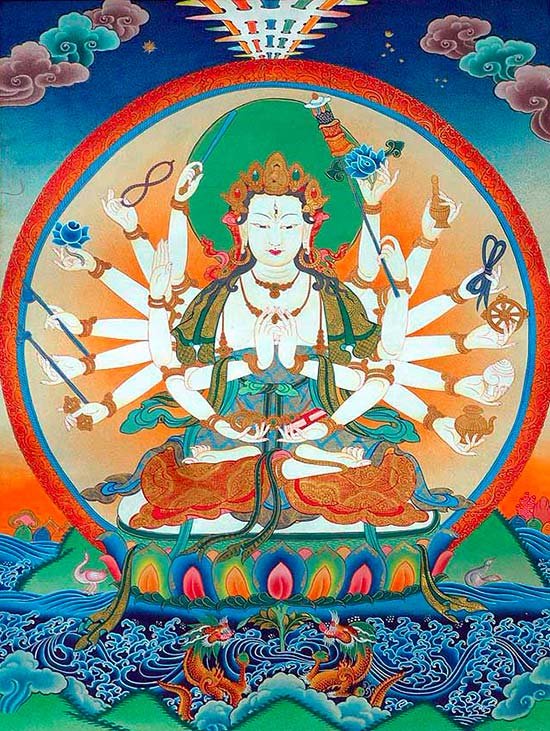Maha Prajnaparamita Sastra
by Gelongma Karma Migme Chödrön | 2001 | 941,039 words
This page describes “v.3 abandonment of the afflicting emotions (klesha-tyaga)” as written by Nagarjuna in his Maha-prajnaparamita-sastra (lit. “the treatise on the great virtue of wisdom”) in the 2nd century. This book, written in five volumes, represents an encyclopedia on Buddhism as well as a commentary on the Pancavimsatisahasrika Prajnaparamita.
V.3 Abandonment of the afflicting emotions (kleśa-tyaga)
To destroy, to reject all [the afflicting emotions] from the three fetters (saṃyojana)[1] up to the ninety-eight latent tendencies (anuśaya) is called ‘abandonment’ (tyāga). By recollecting the rejection of these things as one rejects venomous snakes (āśīviṣa)[2] or like shackles, one acquires salvation (yogakṣema) and joy (prāmodya).
Furthermore, recollection of the abandoning of the disturbing emotions (kleśatyāgānusmṛti) also enters into recollection of the Dharma (dharmānusmṛti).
Question. – If it enters into the recollection of the Dharma, why speak of it again here?
Answer. – Abandonment of the disturbing emotions is something splendid (cāru), difficult to acquire (durlabha), peerless (anuttara) and immense (paramāṇa); this is why it is mentioned separately.
Furthermore, there is a difference between recollection of the Dharma and recollection of abandonment. To recollect the Dharma is to recollect the Dharma of the Buddha, the foremost of all good dharmas. To recollect abandonment is to recollect the disturbing emotions (āpatti) and sins (āpatti) insofar as they are quickly rejected. Since their aspects (ākāra) are distinct, the two recollections are different. [227c]
For these many reasons, the yogin should recollect abandonment [of the disturbing emotions]. This recollection of abandonment constitutes the first practice of knowledge as dhyāna where there is a risk of experiencing pride (abhimāna).[3]
Footnotes and references:
[1]:
Satkāyādṛṣṭi, śīlavrataparāmarśa and vicikitsā: cf. Kośa, V, p. 85; Pañcaviṃśati, p. 79, l. 8–9.
[2]:
See the apologue of the four venomous snakes in the Aśīviṣopamasūtra: see above, p. 702–707F; Vimalakīrtinirdeśa, p. 136–137, note.
[3]:
See Kośa, V, p. 27.
